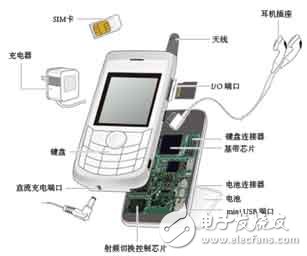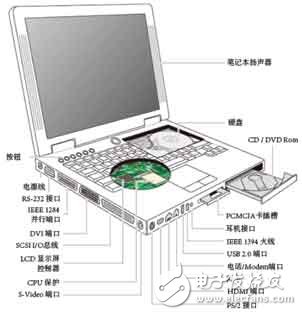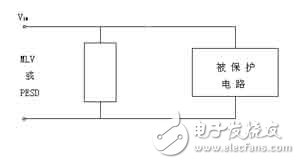Circuit protection is an important part of the design
The most important design work in electronics is circuit design. Circuits can be divided into two categories: functional circuits and protection circuits. Functional circuits (such as power supply circuits, oscillator circuits, A/D conversion circuits, etc.) are used to implement various functions of electronic products; and protection circuits (overcurrent protection circuits, overvoltage protection circuits, and overcurrent and overvoltage protection circuits) ) is used to protect functional circuits to achieve the safety, reliability and durability of electronic products.
In recent years, portable electronic products have developed rapidly, such as MP3, MP4, PMP, DVD, digital cameras and camcorders, notebook computers, netbooks (a small laptop) and smartphones. The main features of these portable electronic products are more functions, complicated circuits, high operating frequency, high frequency bandwidth, high signal transmission rate, and small size (all using SMD components), which puts higher design requirements for circuit protection. In portable electronic products such as mobile phones and notebook computers, due to their high operating frequency, frequency bandwidth, and high data transmission rate, the advantages and disadvantages of circuit protection design not only involve the safety, reliability and durability of electronic products, but also It involves the performance quality and cost of electronic products. Therefore, circuit protection is an important task in the design of electronic products.
The importance of circuit protection
In today's portable electronic products, the range of circuit protection is extremely wide and numerous. Here are two typical portable electronic products to illustrate the importance of circuit protection.
1 mobile phone
The development of mobile phones ranges from a single call to a smart phone that can listen to music, take pictures, surf the Internet, watch TV, GPS, etc. The circuit is more complicated, and the corresponding protection circuit range is also expanding. Figure 1 shows the various parts of the phone that need to be protected.

Figure 1 Parts of the phone that need protection
2 laptop
Laptops have become a fashionable portable electronic product, and the recently developed "netbook" has been favored by young people. Laptops are more complex than mobile phones and require a wider range of components to protect (see Figure 2).

Figure 2 Components that need to be protected in a laptop
It should be noted that the portable electronic products in Figures 1 and 2 are not the latest products, but it can be seen that the scope and number of circuit protections are numerous, and the importance of protection circuits in these products can be seen.
It is these protective components that achieve the safety, reliability and durability of electronic products, and reduce the number of user repairs, maintenance costs and the impact of having mobile phones and laptops on the work.
Types of protection components and working principle
Protection components are divided into three categories: overcurrent protection, overvoltage protection, overcurrent, and overvoltage protection. Their basic working principle is as follows.
1 overcurrent protection
The overcurrent protection component is a nonlinear positive temperature coefficient thermistor (PPTC), as shown in Figure 3. Once an overcurrent condition occurs, an excessive current causes the protection element to heat up to change the resistance value, from a low resistance state to a high resistance state, thereby limiting the current and protecting the protected circuit from overcurrent damage; After the fault is removed, the protection component cools and automatically changes from a high-impedance state to a low-resistance state, returning to normal operation. This type of protection component is called a self-resetting overcurrent protection component, such as Tyco Electronics' PolySwitchTM component.

Figure 3 PolySwitchTM component operating circuit
2 Overvoltage protection
The overvoltage protection component is connected in parallel to the protected circuit (see Figure 4). When the input voltage is not over-voltage, the over-voltage protection component is in a high-impedance state, and its leakage current is very small; once the input voltage is over-voltage, the over-voltage protection component provides a low-impedance path in an instant, and the voltage clamp is placed in a safe state. Low voltage to protect the circuit from overvoltage damage. When the input voltage drops to the normal operating voltage, the overvoltage protection component will automatically return to the high impedance state. Tyco Electronics' multi-layer varistor (MLV) and ESD protection component PESD are commonly used overvoltage protection components.

Figure 4 Overvoltage protection component working circuit
3 overcurrent and overvoltage protection
The overcurrent and overvoltage protection device is a module (integrated circuit) composed of an overcurrent protection component and an overvoltage protection component, as shown in FIG. It protects the circuit from damage when the input voltage is overvoltage or an overcurrent fault is caused by a short circuit.

Figure 5: Overcurrent, overvoltage protection device operating circuit
Tyco Electronics' PolyZenTM components are commonly used overcurrent and overvoltage protection devices.
Iron Battery,Nife Batteries Australia,Nife Battery 600Ah For Asutralia,Ni-Fe Battery 450~600Ah
Henan Xintaihang Power Source Co.,Ltd , https://www.taihangbattery.com
